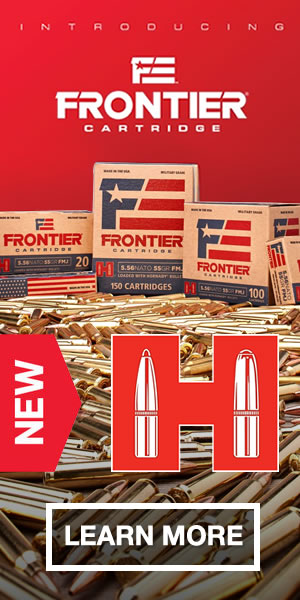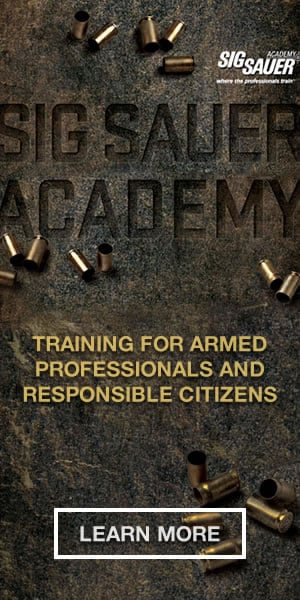The concept of building three sizes of the same defensive handgun to accommodate different missions or uses-Micro, Compact, and Full Size-is nothing new. The first manufacturer that I encountered that did this was Colt.
For many years, Colt Manufactured its full-size Government Model 1911 .45 ACP. Following a military bid for a more compact and lighter weight 1911 in 9mm for officers after WWII, the medium size Colt Commander with aluminum frame was introduced to the public. The Commander wasn't really a true compact sized handgun since the only difference between it and the full size Government Model was a 3/4 inch shorter barrel.
It wasn't until 1985 that Colt introduced a "micro" sized pistol designed for concealment that gave the consumer a trio of choices-this was the Officer's Model. The Officers Model barrel was chopped back to 3.5 inches, and the frame was shortened and accepted a six round magazine.
Smith and Wesson is expanding their new M&P M2.0 double stack pistol lineup in this direction with the introduction of a Compact version to complement the full size model. The terminology is changing in Smith and Wesson since the use of the term "Compact" in the previous generation of M&P pistol was actually what most would consider a "micro" version-it is much closer in size to the Glock 26.
In the M&P M2.0 lineup, the new Compact model is more of a true midsize pistol, downsized a bit from the full size version to provide the end user with a pistol that retains the important characteristics and advantages of a full size pistol in a more concealable package-maximum muzzle velocity and high magazine capacity. I recently received the .40 caliber version of the M&P 2.0 Compact for testing. But before I get into the finer points, let me cover the dimensional differences.
| Dimensions | M&P 40 M2.0 | M&P 40 M2.0 Compact |
|---|---|---|
| Barrel Length | 4.25 inches | 4 inches |
| Overall Length | 7.4 inches | 7.3 inches |
| Weight | 25.9 Ounces | 25.3 Ounces |
| Magazine Capacity | 15+1 | 13+1 |
At first glance, the dimensional differences are not earth shattering. But this doesn't make Smith and Wesson's take on the mid-sized pistol concept a bad thing.
What Smith has done with their M&P 40 (and 9mm) M2.0 Compact size reduction is to refine it a bit from the full size duty version, imparting a near perfect balance to it. If I was choosing a M2.0 M&P to carry on duty, it would be a 9mm, AND it would be the Compact version-the feel is just that good, plus the somewhat smaller size would enhance its use as an off-duty gun as well. But I am getting ahead of myself.
The original M&P is an already excellent-and very popular-pistol in its own right. The M&P really got the ball rolling in terms of providing a user selected system for adjusting and tailoring the pistol grip to their hand, instead of being a "one size fits all" design. That legacy continues in the M2.0. Although Smith and Wesson calls the new M2.0 "an entirely new platform", I don't agree with that premise. There are however, some significant upgrades over the previous M&P models that make it even more user friendly, which are listed below;
- The interior stainless steel chassis of the polymer frame has been extended for increased rigidity. The frame of course, is set up with a Picatinny rail for mounting lights and accessories.
- A low bore axis for less muzzle rise during recoil
- A fine-tuned, crisper trigger with tactile and audible reset-note that there is about a half inch of take-up slack on the trigger, which gives the user a margin of error in high stress situations if they find their finger on the trigger too soon. The trigger pull is very good for this type of pistol in my book.
- Four palmswell grip inserts are included (size Small, Medium, Medium Large, and Large) for adjusting the feel of the grip. Seriously, if you can't find an insert to make the M&P feel great in your hand, there is a problem!
- Two magazine sleeves are included for use with full size M&P magazines should you want maximum capacity. The close the gap between the base of the magazine and the base of the grip once inserted. They are not for use with the two included magazines designed for the Compact pistol.
- Armonite finish is used on the stainless steel slide and barrel for corrosion resistance.
One upgrade to the M2.0 that I have some mixed feelings about-this is just me-is the new "aggressively textured grip" surface. This new grip surface imparts a molded-in "skateboard tape" feel to the frame. Now, those favoring this type of texture need not buy an aftermarket grip tape kit as one of my partners at my police department did to upgrade his older M&P-just purchase an M&P M2.0! My mixed feelings only stem from personal preference for a smoother grip surface-my opinion is probably in the minority these days. I do agree that one isn't likely to lose their control of the M2.0 when their hands are wet or sweaty! I actually got used to it after a while, and it proved to be no detriment while firing.
The M&P M.20 has a number of additional features and options. The base model comes equipped three dot Novak style sights, with a drift adjustable rear sight-tritium night sights are available. Truglo sights are also an option.
Another option that I would favor were I purchasing a M2.0 Compact would be the addition of a manual safety-for two personal reasons. First, it would give me an extra margin of safety while carrying the Compact in uniform if there was a gun grab attempt. Second, it would give an additional measure of safety with having a young child around the house. Smith's safety lever works just like a 1911's-up is on, down is off. That being said, the M&P's trigger safety system is perfectly safe without the addition of a manual lever. But if you want an extra margin of insurance it is available.
The M&P's slide release levers are ambidextrous-one on each side-and the magazine release is reversible. Having a reversible release is better than having a button on both sides of the frame. A magazine button on the outside of the gun stands a risk of being bumped and inadvertently dislodging the magazine, which converts your fine semi-automatic into a single shot. A single reversible button is always between the gun and the shooters body.
I have to say, I really like the new M2.0 trigger. Its curved, articulating design is the most comfortable of the "trigger safety" breed. There is no lever on the trigger like competing designs since the hinged lower half of the trigger releases the automatic safety, and the curve of the trigger literally wraps around the finger for exquisite control.
I mentioned earlier that were I purchasing the M&P Compact M2.0, I would select 9mm caliber. While I can handle the .40 just fine, there is no doubt that there is more recoil. It is less pleasant to shoot. I found that I can place shots a bit more accurately with the 9mm version, rather than with the .40 caliber version. Were I purchasing an M&P for use as a home defense or trail gun-where long shots are not the norm-rather than a duty/off-duty pistol, I would select the harder hitting .40. In either caliber the M&P M2.0's are drop dead reliable.
Smith and Wesson just keeps making a great pistol better and better. Currently Vance's has the M&P M2.0 Compacts in 9mm and .40-with or without manual safety-for $419.99. For more information on the M&P lineup go to www.smith-wesson.com


